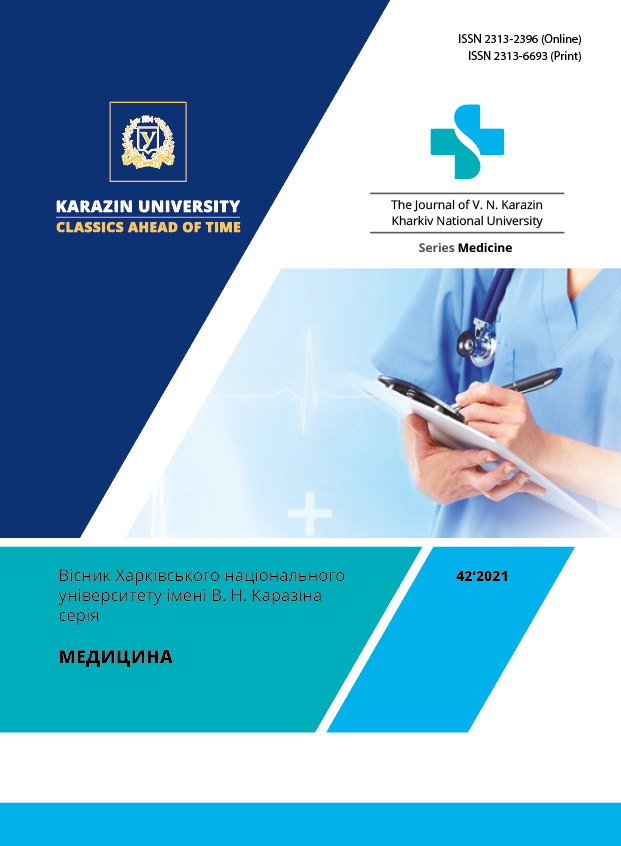Підвищення ефективності прогнозування передчасних пологів
Анотація
Резюме. Порушення плацентації певним чином відіграють важливу роль у патогенезі великих акушерських синдромів. Тому привертає увагу можливість застосування біохімічних показників рівня плацентарного фактору росту (placental growth factor, PlGF) та fms-подібної тирозинкінази (sFlt-1) для прогнозування передчасних пологів. Метою роботи була розробка критеріїв прогнозування передчасних пологів на підставі сумісного використання ультразвукової цервікометрії та концентрації PlGF і sFlt-1. Матеріали та методи. Усього було обстежено 227 вагітних жінок, у 190 з яких відбулися передчасні пологи. До I групи залучено 48 жінок з загрозою невиношування вагітності, що завершилась пологами у термінах від 23 до 27 тижнів. У II групі під спостереженням знаходилось 142 жінки з загрозою невиношування вагітності в термінах від 28 до 36 тижнів. До III групи увійшли 37 жінок з фізіологічним перебігом вагітності, що завершилась пологами без ускладнень у термінах 38-41 тиждень. Усім залученим до роботи пацієнткам у терміні 16 тижнів проводили ультразвукову цервікометрію на апараті Voluson 730 (GE Healthcare, USA), а також вивчали концентрацію у сироватці крові PlGF та sFlt-1 методом електрохмілюмінісцентного імуноаналізу за допомогою аналізатора Cobas e411 (Roche diagnostics, Швейцарія). Результати. У ході дослідження виявлено вірогідне (р < 0,001) зниження в сироватці крові усередненої концентрації PlGF на 65 % на тлі підвищення рівня sFlt-1 на 93 % у жінок з перериванням вагітності в ранні терміни – 23–27 тижнів (I група) по відношенню до жінок з неускладненою вагітністю. У жінок з передчасними пологами у термін гестації 28–36 тижнів (II група) спостерігалась аналогічна тенденція змін: рівень PlGF вірогідно (р = 0,014) знижувався в середньому на 68 % по відношенню до жінок з фізіологічним перебігом вагітності. У жінок I групи значення співвідношення sFlt-1/PlGF перевищували (р < 0,001) значення пацієнток III групи в 14 разів. Але ще більш виражений дисбаланс ангіогенних факторів спостерігався у жінок II групи – в середньому в 16 разів. Для прогнозування передчасних пологів було використано два основних маркера: вкорочення шийки матки за даними ультразвукової цервікометрії менше 30 мм, а також співвідношення sFlt-1/PlGF більше 50 ум. од. Відношення шансів (ВШ) передчасних пологів у разі використання лише довжини шийки матки складало 34,133 (95 % довірчий інтервал – 12,308–94,660). ВШ у разі комбінованого використання даних цервікометрії та показників ангіогенезу було 148,750 (95 % довірчий інтервал – 33,243–665,593).
Завантаження
Посилання
Shahine L, Lathi R. Recurrent pregnancy loss: evalution and treatment. Obstet Gynecol Clin North Am. 2015; 42 (1): 117–134. https://doi.org/10.1016/j.ogc.2014.10.002.
Weel IC, Baergen RN, Romao-Veiga M, et al. Association between placental lesions, cytokines and angiogenic factors in pregnant women with preeclampsia. PLoS One. 2016; 11 (6): e0157584. https://doi.org/10.1371/journal.pone.0157584.
Turpin CA, Sakyi SA, Owiredu WK, et al. Association between adverse pregnancy outcome and imbalance in angiogenic regulators and oxidative stress biomarkers in gestational hypertension and preeclampsia. BMC Pregnancy Childbirth. 2015; 15: 189. https://doi.org/10.1186/s12884-015-0624-y.
Wright D, Tan MY, O'Gorman N, et al. Predictive performance of the competing risk model in screening for preeclampsia. Am J Obstet Gynecol. 2019; 220 (2): 199. e1-199.e13. https://doi.org/10.1016/j.ajog.2018.11.1087.
Di Renzo GC, Cabero Roura L, Facchinetti F, et al. Preterm labor and birth management: Recommendations from the European Association of Perinatal Medicine. J Matern Fetal Neonatal Med. 2017; 30 (17): 2011–2030. https://doi.org/10.1080/14767058.2017.1323860.
Berghella V, Saccone G. Cervical assessment by ultrasound for preventing preterm delivery. Cochrane Database Syst Rev. 2019; 9: CD007235. https://doi.org/10.1002/14651858.CD007235.pub4.
Bruijn M, Vis JY, Wilms FF, et al. Quantitative fetal fibronectin testing in combination with cervical length measurement in the prediction of spontaneous preterm delivery in symptomatic women. BJOG. 2016; 123: 1965–1971.
Aguilar A. Pre-eclampsia: sFLT1 inhibits NO signalling. Nat Rev Nephrol. 2016; 12 (8): 442. https://doi.org/10.1038/nrneph.2016.90.
Lee SE, Kim SC, Kim KH, et al. Detection of angiogenic factors in midtrimester amniotic fluid and the prediction of preterm birth. Taiwan J Obstet Gynecol. 2016; 55: 539–544.
Lakhno1 IV, Коrovay SV. Actual issues of prediction and prevention of preterm birth. Health of woman. 2020; 1: 8–13. https://doi.org/10.15574/HW.2020.147.8.
Triunfo S, Crovetto F, Crispi F, et al. Association of first-trimester angiogenic factors with placental histological findings in late-onset preeclampsia. Placenta. 2016; 42: 44–50. https://doi.org/10.1016/j.placenta.2016.04.005.
Lakhno IV. Modern possibilities of pre-eclampsia prediction and prevention. Health of woman. 2016; 7: 44–48. Режим доступу: http://nbuv.gov.ua/UJRN/Zdzh_2016_7_9
Вісник Харківського національного університету імені В. Н. Каразіна, серія Медицина має такі умови авторського права:
1. Автори зберігають авторські права та надають журналу право на першу публікацію разом із роботою, яка одночасно ліцензується згідно з ліцензією Creative Commons Attribution License, яка дозволяє іншим ділитися роботою з визнанням авторства роботи та першої публікації в цьому журналі.
2. Автори можуть укладати окремі додаткові договірні угоди щодо неексклюзивного розповсюдження опублікованої журналом версії роботи з підтвердженням її початкової публікації в цьому журналі.
3. Авторам дозволяється та заохочується публікувати свої роботи в Інтернеті до та під час процесу подання, оскільки це може призвести до продуктивного обміну, а також до раннього та більшого цитування опублікованої роботи.




